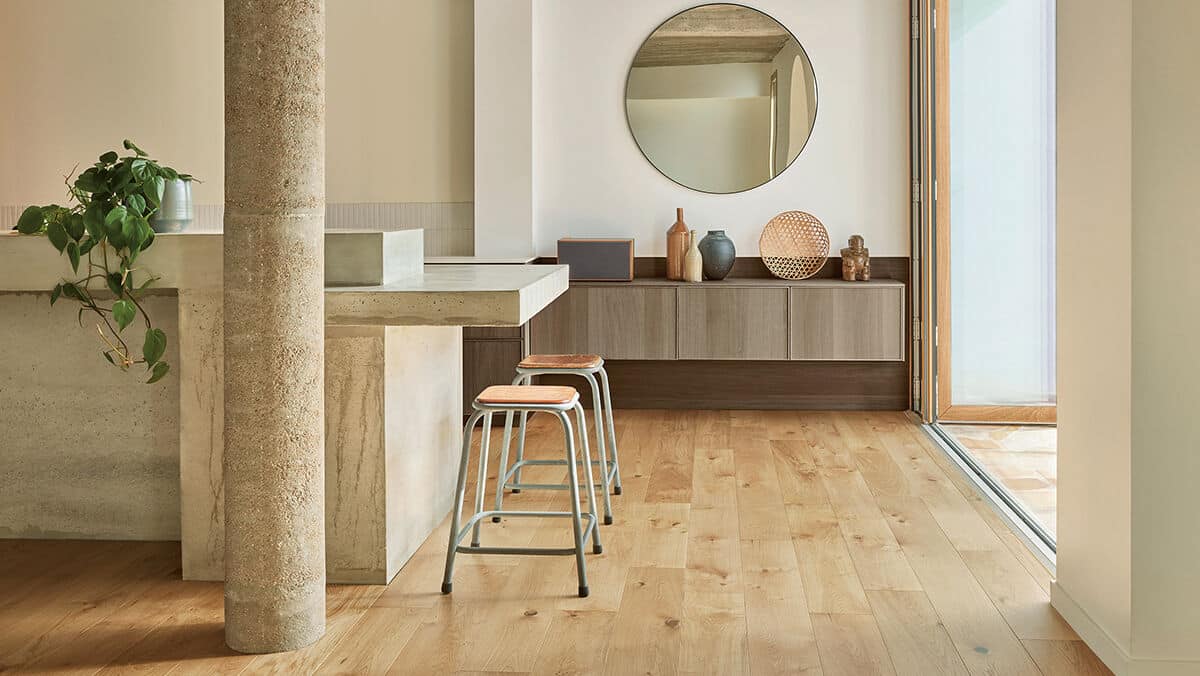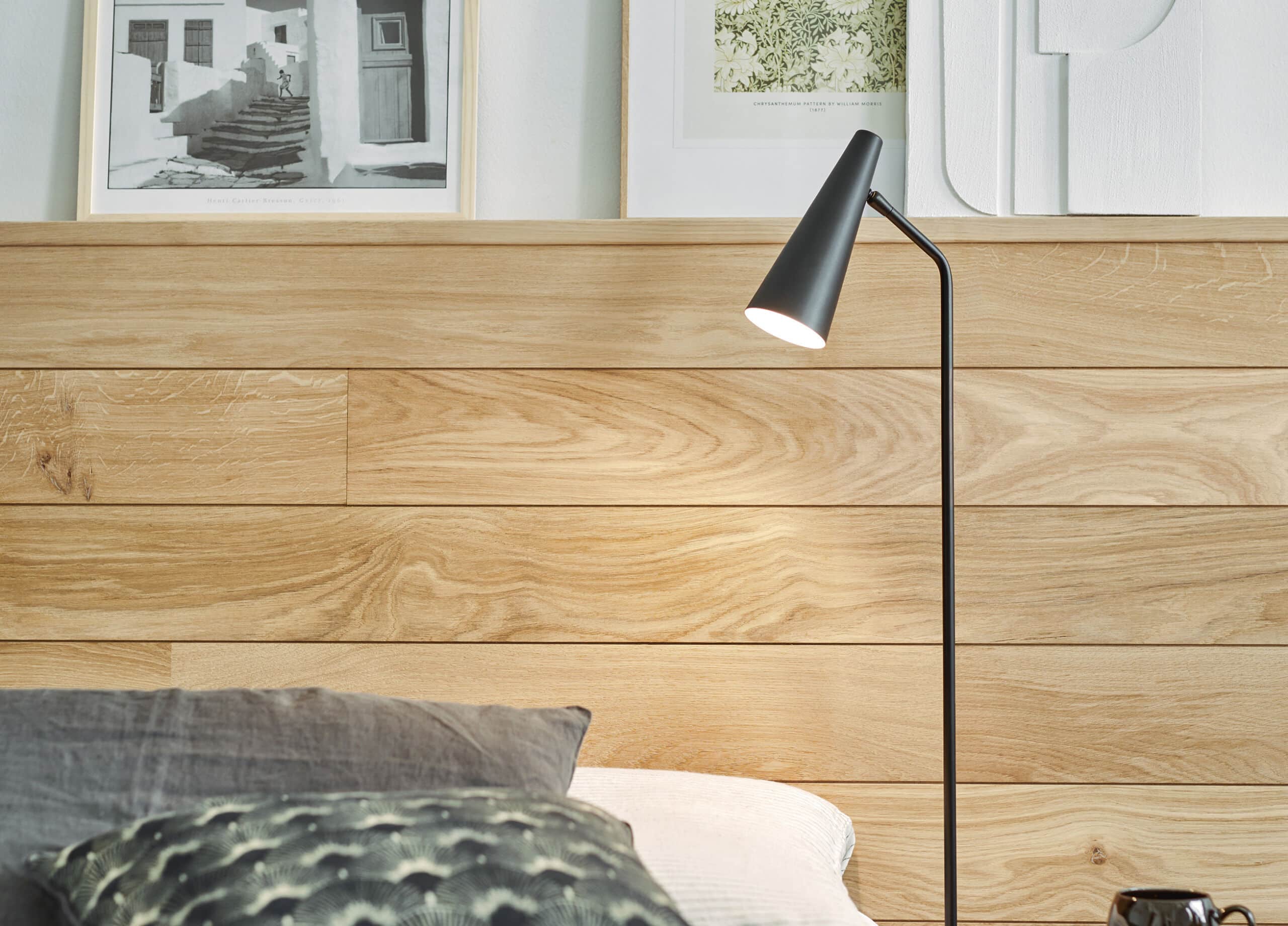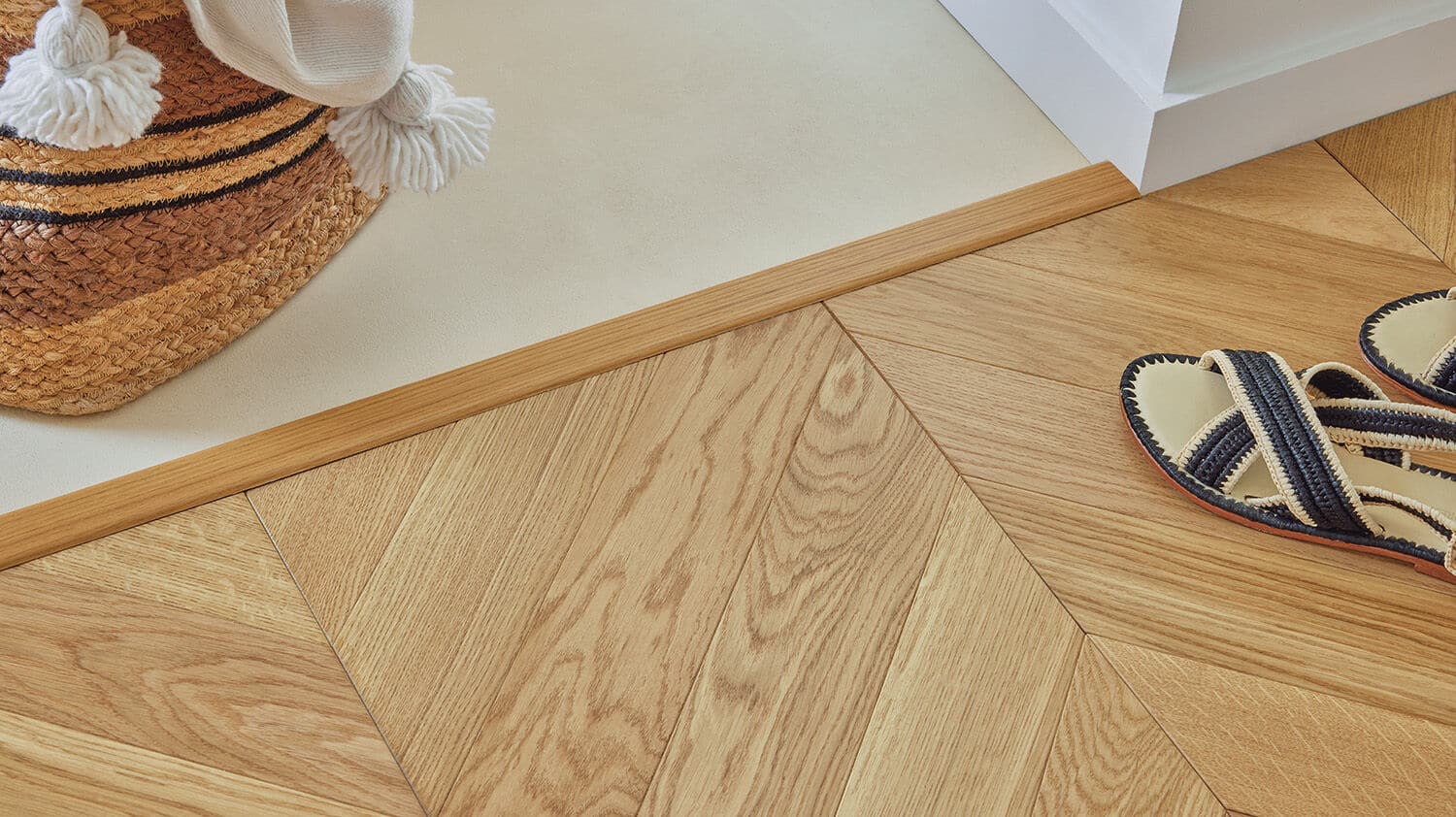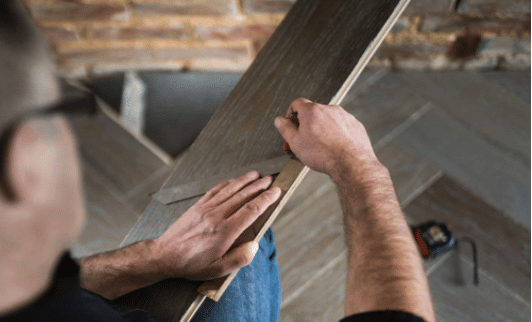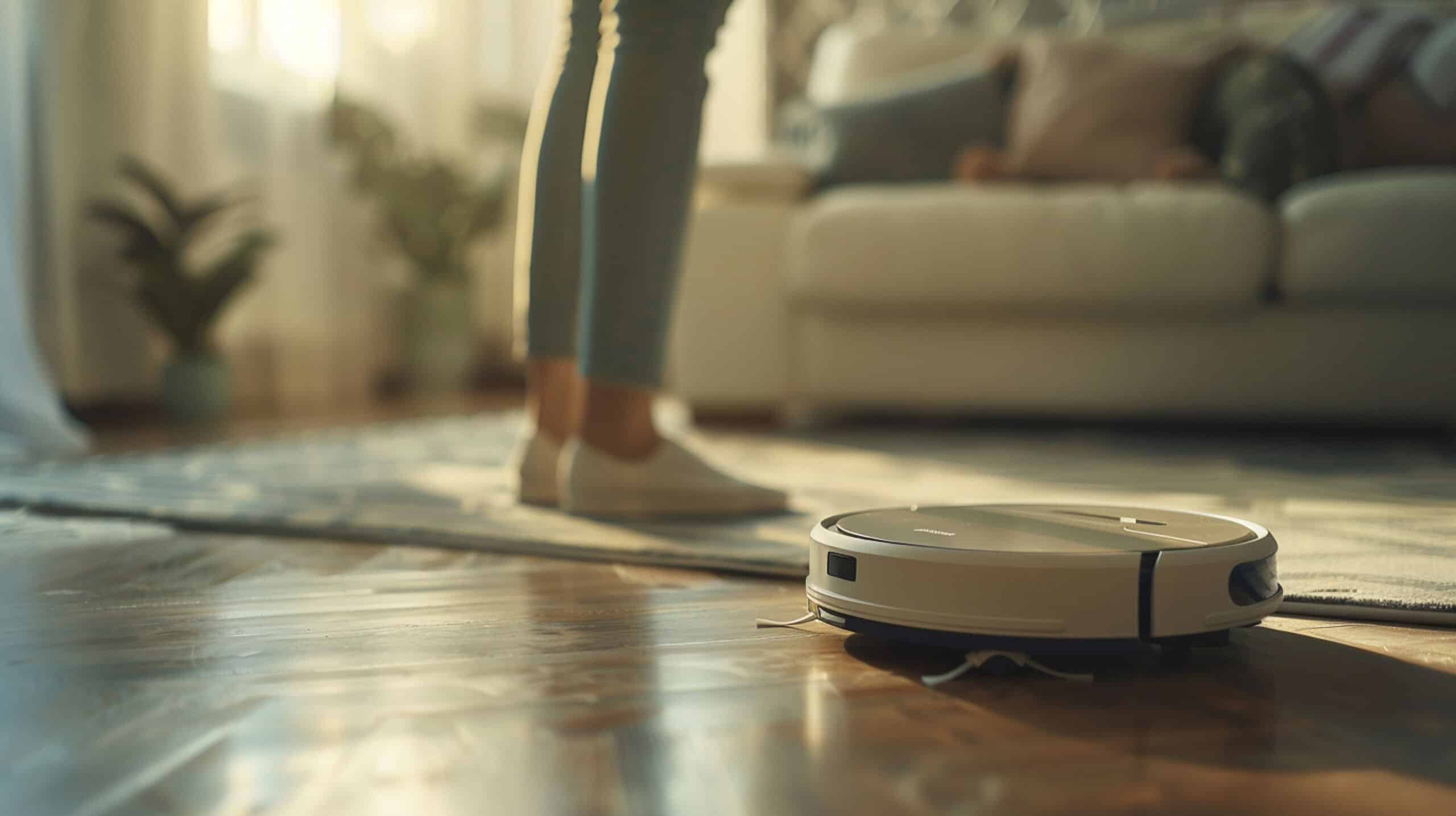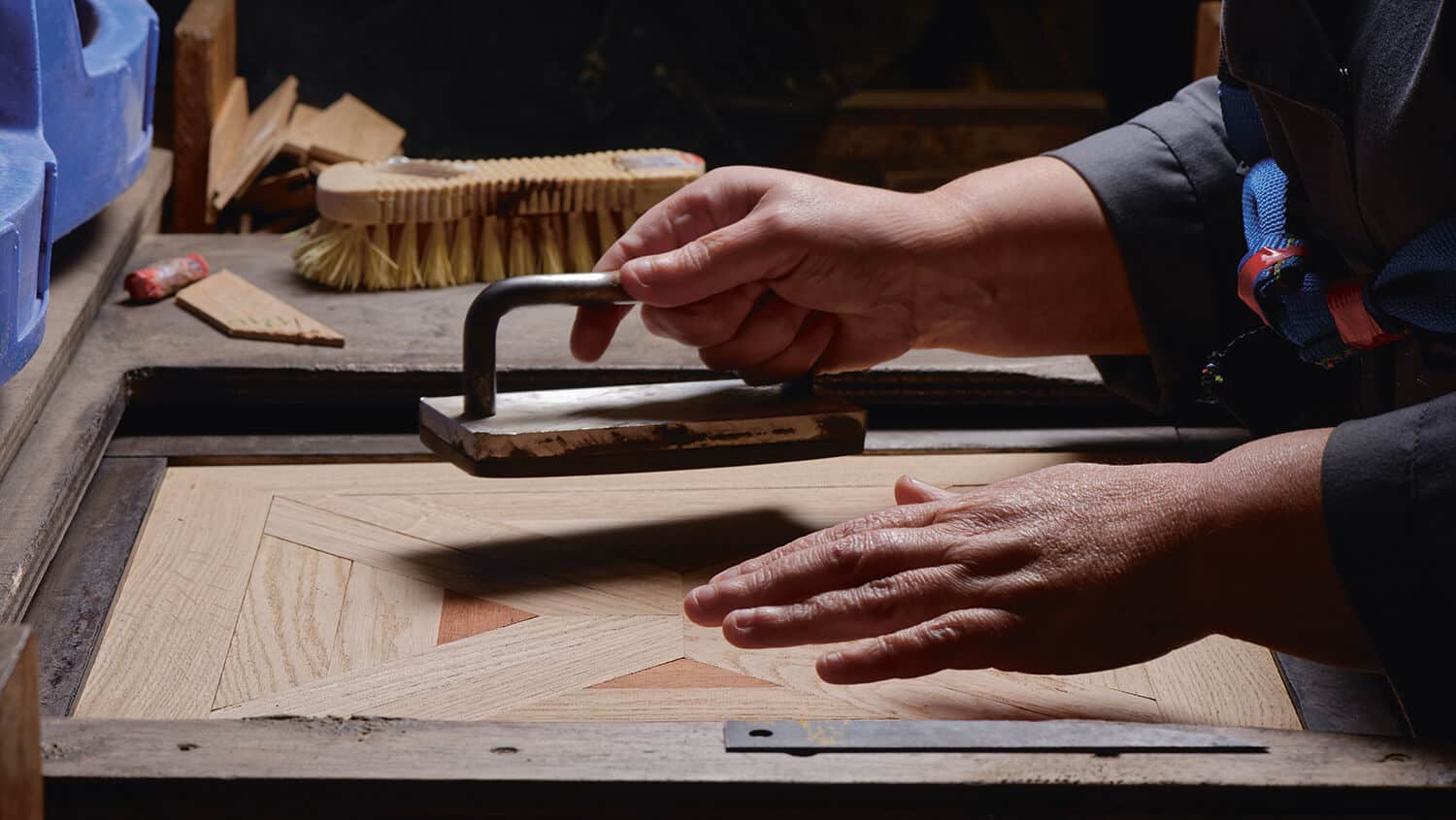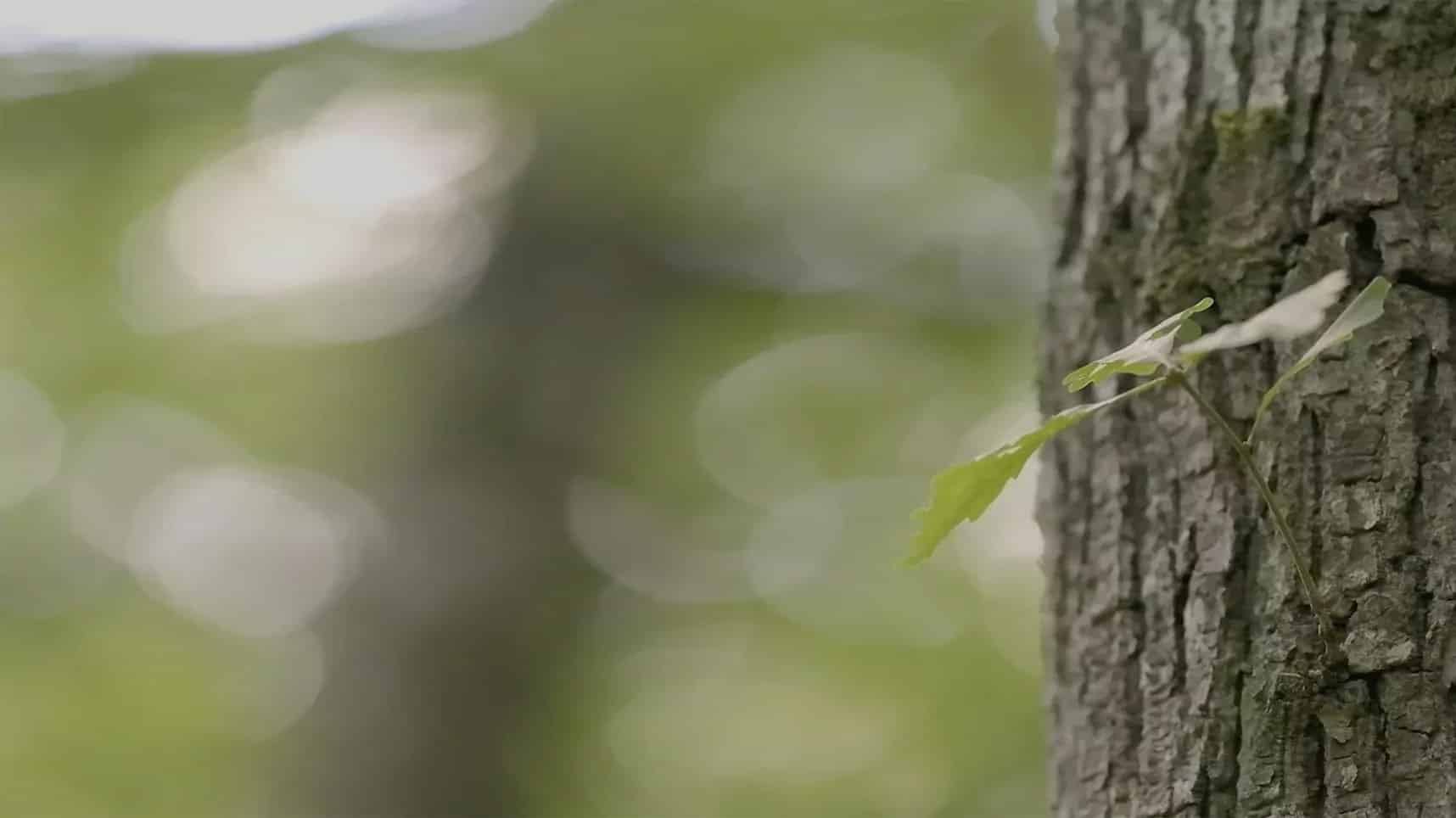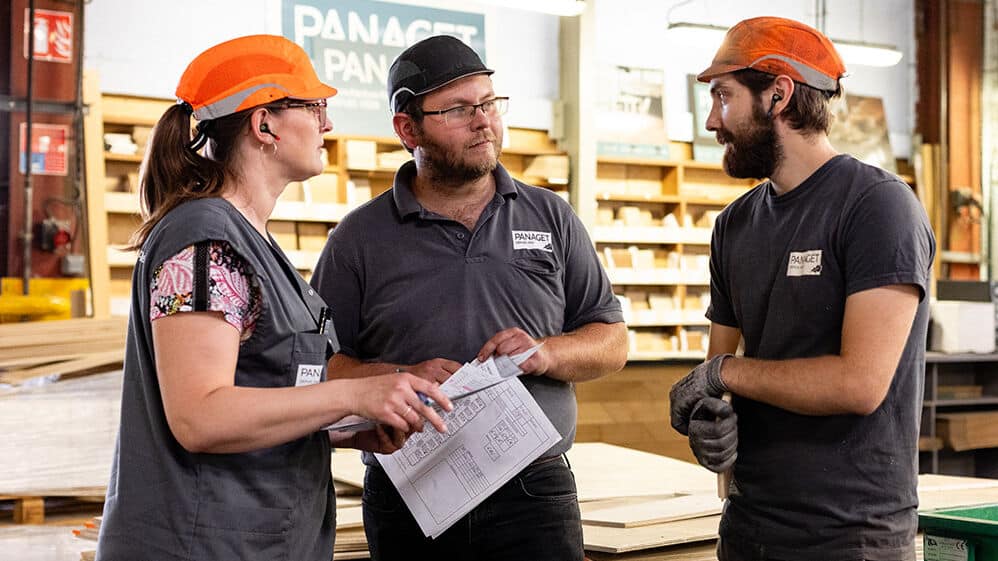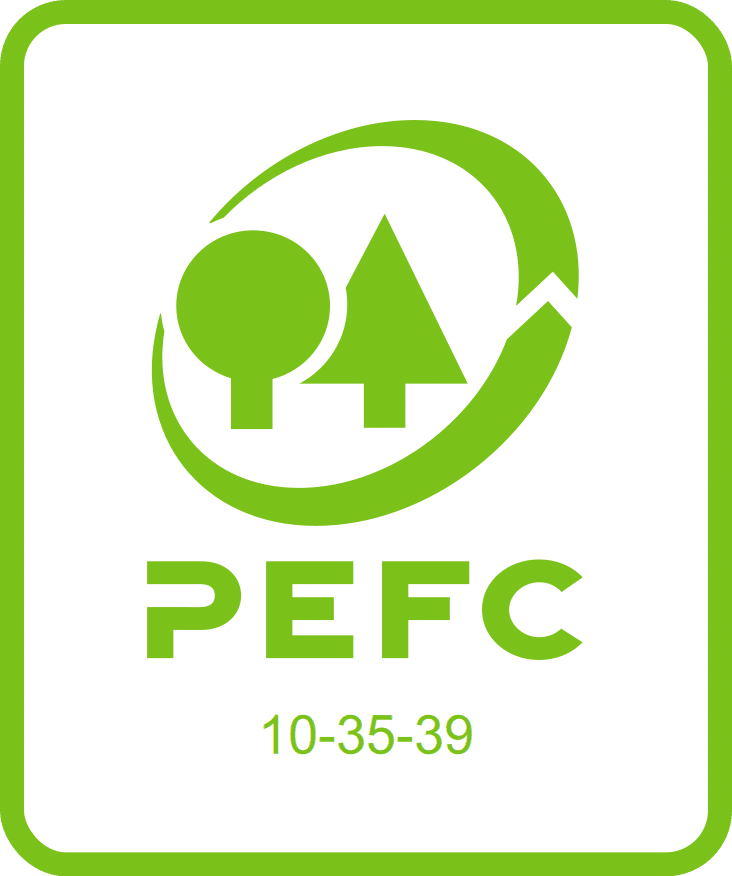Removing stains from wood floors
Wood floors are under constant attack from the ravages of everyday life. Stains are a common occurrence and some are more stubborn than others. The cleaning method you use will depend on the type of wood floor you have. It’s important to act quickly if you have solid wood floors as any spillages can penetrate deep into the wood. In general, it is easier to clean and maintain oiled or lacquered wood floors thanks to their protective finish. However, we still advise wiping any spills as you soon as you notice them to keep your wood floor in good condition.
Cleaning wood floors: the basics
It is very important to sweep or vacuum your wood floor on a daily basis. This will prevent stubborn stains from forming and make it easier to maintain the floor and extend its lifespan. To keep your wood floor looking its best, we strongly advise against the use of abrasive tools or products. These can erode or mark the wood, leaving irreparable scratches and permanent stains. To avoid any damage and ensure your wood floor is well cleaned, we recommend using a microfibre cloth.
To maintain your wood floor, vacuum it regularly every day. Panaget recommends that you clean your wood flooring no more than once a month, using cold water and lacquered floor cleaner or oiled floor soap and a well wrung-out microfibre.
Our top tips for lacquered stains
Over time, you may notice more stubborn stains appearing on your wood floor. Pets, young children, clumsy family members or simply everyday use can all create stains that require more intensive cleaning and maintenance than basic sweeping and mopping. To avoid damaging your wood floor with abrasive cleaning products, use one of Panaget’s specially designed cleaners for lacquered or oiled floors.
Removing wine stains
If you spill wine on your wood floor, it’s important to act quickly! Soak up the liquid with kitchen roll then use Panaget’s special oiled or lacquered wood soap. Finally, rinse the area with a damp sponge.
Removing coffee stains
If you spill coffee on your wood floor, immediately soak up the liquid with kitchen roll. Apply Panaget’s special soap directly to the stained area or dilute it in water first, before scrubbing with a sponge or a microfibre cloth. If you have lacquered floors, our cleaner will remove the stain if applied immediately to the affected area.
Removing urine stains
If your child or a pet has a little accident on the floor, we recommend soaking up the urine with soap or a cleaner designed specifically for your chosen finish. You can then sprinkle a few drops of vinegar on top to get rid of any unpleasant smells.
Removing wax
If you get candle wax on your wood floor, we recommend using a spatula to gently remove it. To prevent scratches, work slowly and carefully. If you have oiled wood floors, Panaget’s restoration oil will restore the damaged area to its original hue.
Removing oil marks
Use kitchen roll to immediately soak up the excess oil and reduce the damage to your floor. For best results, use Panaget’s soap or cleaner. If you have oiled wood floors, a new coat of oil will restore the wood to its original hue.
Removing paint
If the acrylic is still wet, it should be easy to wipe away with a damp sponge. If the paint has already dried or is refusing to budge, our experts advise using Panaget’s cleaning products to keep the wood looking like new.
You now have all the information you need to remove a range of different stains from your wood floor. To keep it in tip-top condition, we advise regular maintenance. This will make it easier to clean any stains and will ensure your wood floor stands the test of time.
NOTE: Please note that all forms of masking tape should be checked for compatibility with lacquered wood flooring before use (consult the manufacturer if necessary).
Also, if the application time is too long, the adhesive may transfer to the lacquer.

